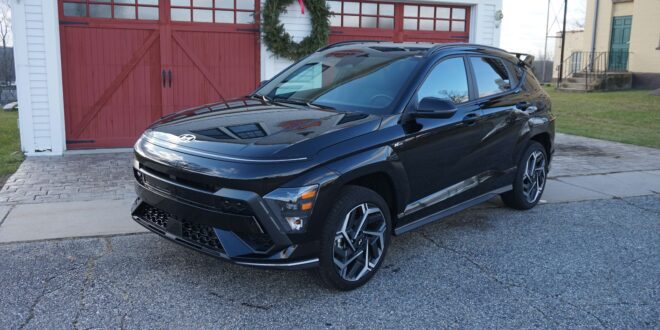EAST HADDAM, CT – Just in time for the holidays, a Hyundai Kona came to town for an extended stay. No, it wasn’t a gift, but due to seasonal logistics challenges, this review car stuck around for a bit longer than usual to serve as Santa’s sleigh. That proved to be a good thing.
The compact Kona’s tall, broad architecture is now in its second generation, and it’s a little more user-friendly than you might imagine.
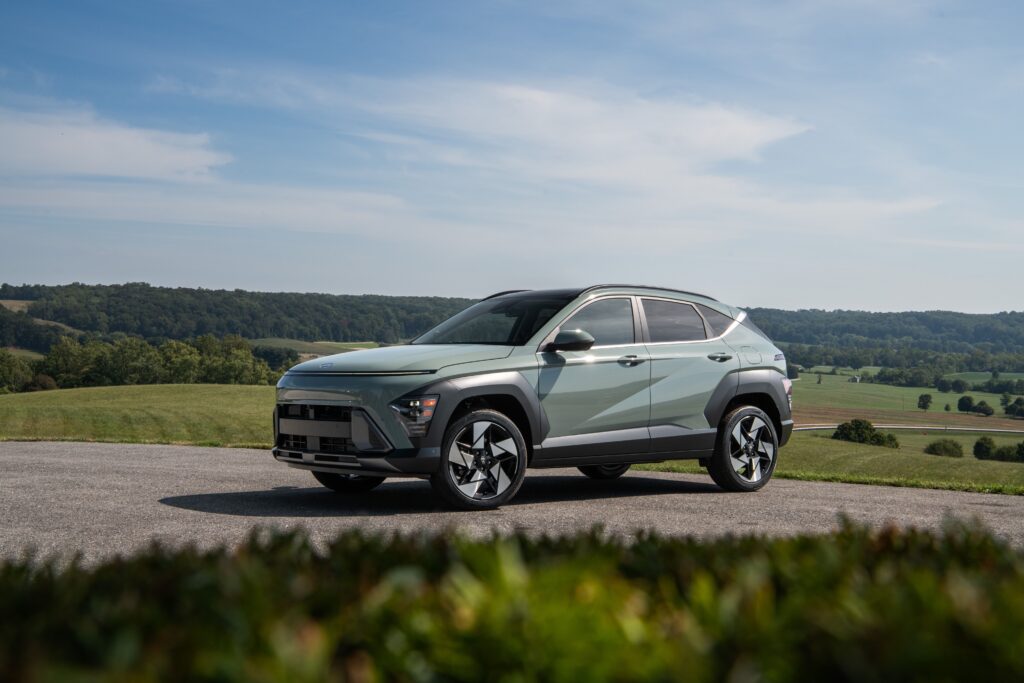
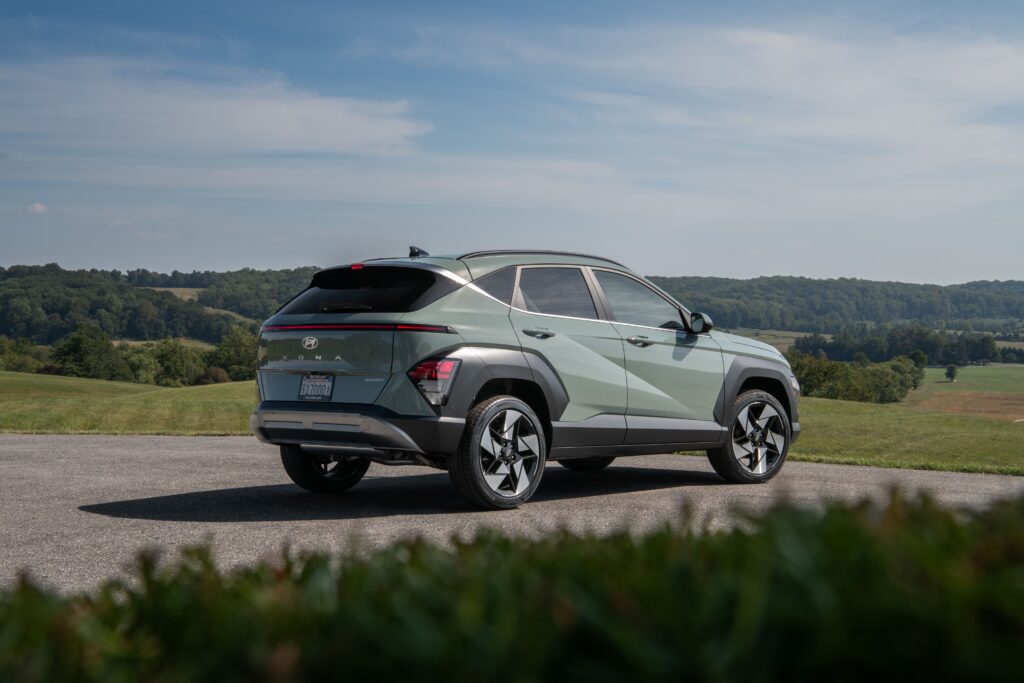
—
Hyundai describes it as “a rugged, dynamic design with upscaled dimensions.” It also claims “the all-new Kona retains its iconic character, supporting active lifestyles for customers of all ages, while offering innovative technologies and convenience features that provide a safe, connected, and comfortable experience.”
I can confirm confirm the claims having carried a load of fresh firewood to a holiday affair in its generous hatchback luggage area, along with all the gifts and antipasto platters. The 2024 Kona is almost six inches longer and an inch wider than its predecessor.
Since the new Kona is also available as an electric vehicle, its styling is EV-centric and somewhat futuristic, which some people like and others don’t. I’m undecided.

Thin, horizontal LED (light emitting diode) head and tail running light bands not only set it apart but contribute to improved aerodynamic efficiency. Supplementary lower clusters complete the primary lighting package and sculptured side surfaces with wheel arch armor add to its distinctive design.
The Hyundai I drove was powered by a 1.6-liter turbocharged four-cylinder gasoline engine, which proved to be advantageous. With all the running around – ’twas the season – there was no down time anxiety over the need to recharge. And with all the disappearing dollars during the holiday season, 24 City and 29 Hwy mpg was appreciated, too. Its 190-horsepower proved to be adequate, though there wasn’t all that much oomph left in reserve.
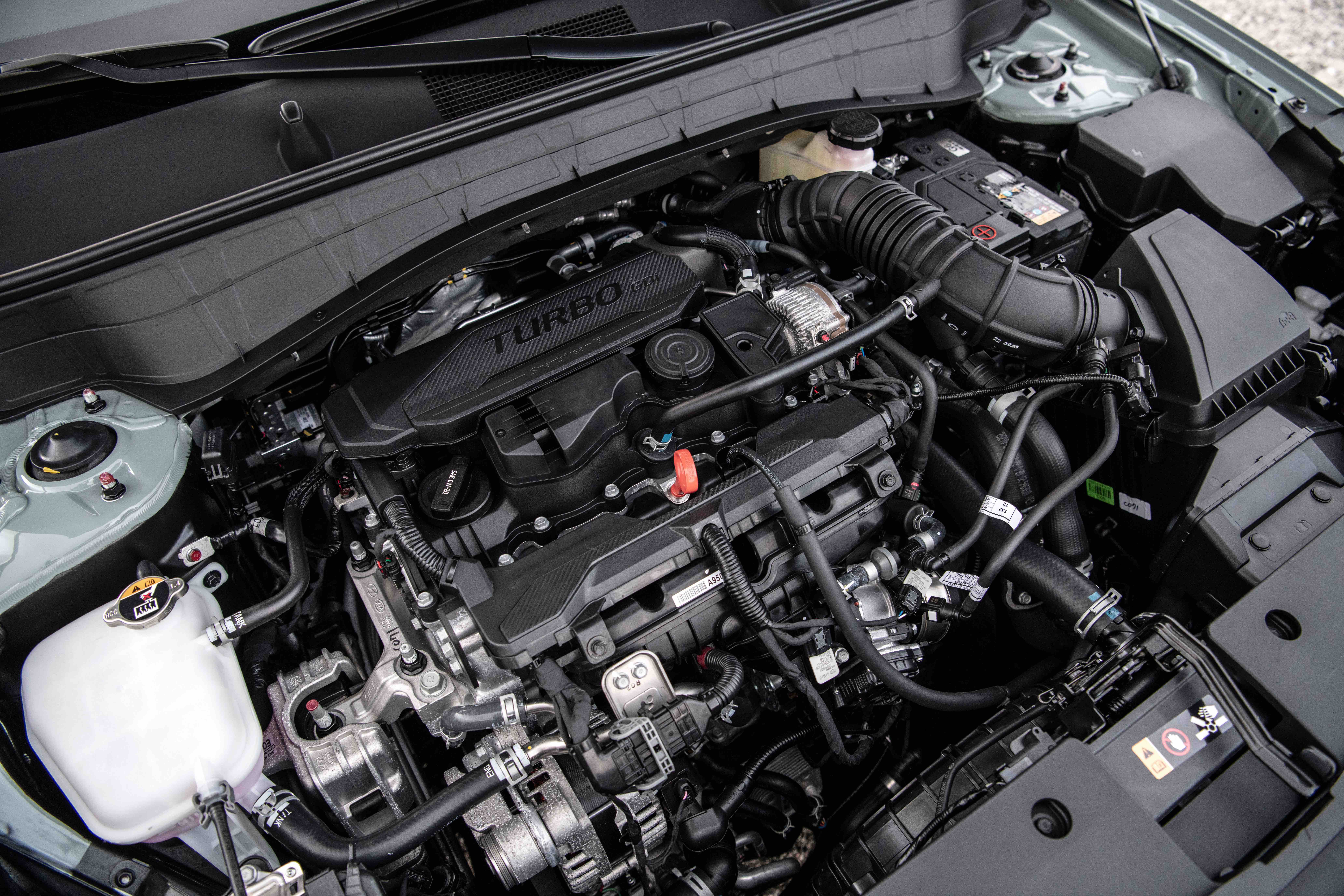
An eight-speed automatic transmission and intelligent, torque-splitting HTRAC All-Wheel Drive was also included, along with a Multi-Link Rear Suspension.
The generally fun-to-drive Kona came in Abyss Black Pearl. The N Line model featured bodycolor cladding, 19-inch model-specific alloy wheels and rear spoiler, dual-outlet exhaust tips, Bose premium audio, cloth sport seating with red accents, aluminum sport pedals, leather-wrapped steering wheel, paddle shifters, scuff plates, black mirrors and more. In addition, aggressive, wing-shaped front and rear fascia designs emphasize a lower stance and sportier appearance.
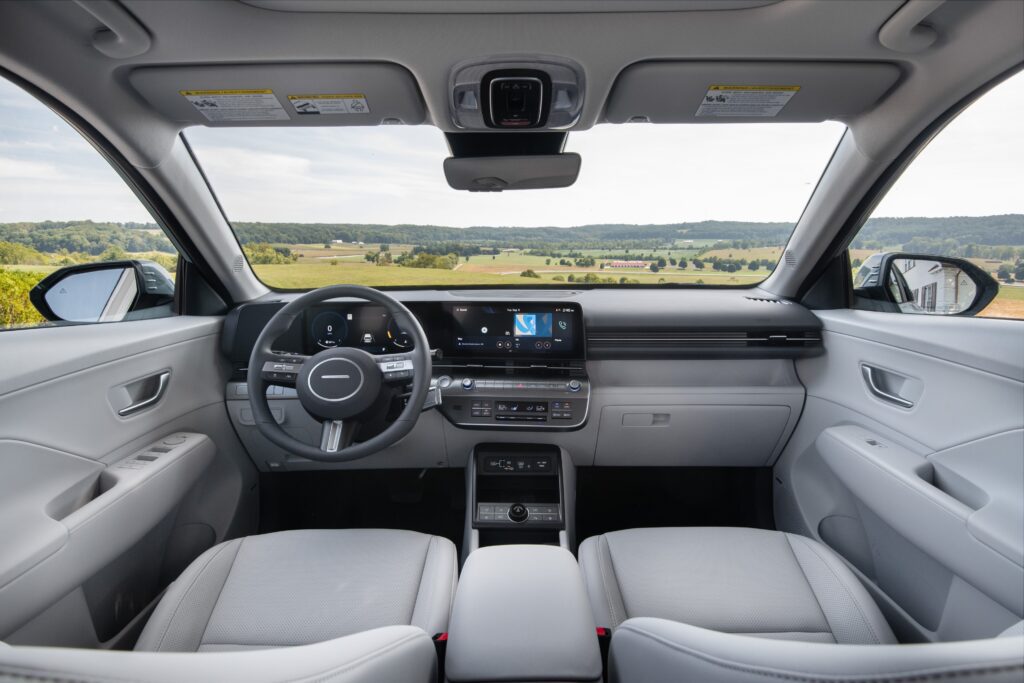
Unfortunately, when pushed hard, the suspension can’t keep up with the N Line’s performance package pretensions. It’s all show, with no additional go.
The Kona’s interior – or “living space” as Hyundai calls it – is functional and user-friendly with good visibility. A dual 12.3-inch panoramic display screen combination is something you’re likely to find in more upscale alternatives. Slimmer, but still quite accommodating, seats add to the interior accessibility and the folding rear bench reclines for improved accommodation.
There are plenty of old-school buttons and control switches, but the unfamiliar steering-wheel twist stalk-mounted gear shift took a bit of getting used to. Though it does free up additional console storage space. Side-curtain airbags are included.

Available Remote Smart Parking Assist aids in getting in and out of parking spaces. During lane changing, Blind-spot View Monitoring provides live video of the blind spot area in the instrument cluster.
The Kona also offers Forward Collision-avoidance Assist, Highway Driving Assist and other available SmartSense Advanced Driver Assistance System (ADAS) features. There’s Blind-Spot Collision Warning, Intelligent Speed Limit Assist, High Beam Assist, Surround View Monitor, Rear Cross-Traffic Collision-Avoidance Assist, Driver Attention Warning, Rear Occupant Alert/Safe Exit Warning, Smart Cruise Control and Parking Collision Avoidance Assist-Reverse. Whew! Got all that?
And that’s not all, but time is precious so let me focus on just one more feature – a Digital Key 2 Touch system. It uses near-field communication on smart phones or smart watches to allow owners to leave their car key at home and use compatible smartphones to lock, unlock, and start their vehicle. I prefer to follow force of habit and take the key with me, because I’d probably forget the phone, instead!

With average new car pricing now exceeding a frosty $47,000, my more heartwarming $33,695 Korean-made Kona N Line made for a happy holiday. The name Kona, by the way, comes from the idyllic, lush lifestyle that’s enjoyed on the western side of Hawaii. Add in “America’s Best Warranty” at 10-years/100,000 miles for the powertrain, and this Hyundai could just be the gift that keeps on giving.
(Photos courtesy of Hyundai unless otherwise noted.)
 RIDE-CT – Classic Cars Celebrating Classic Cars in Connecticut
RIDE-CT – Classic Cars Celebrating Classic Cars in Connecticut

